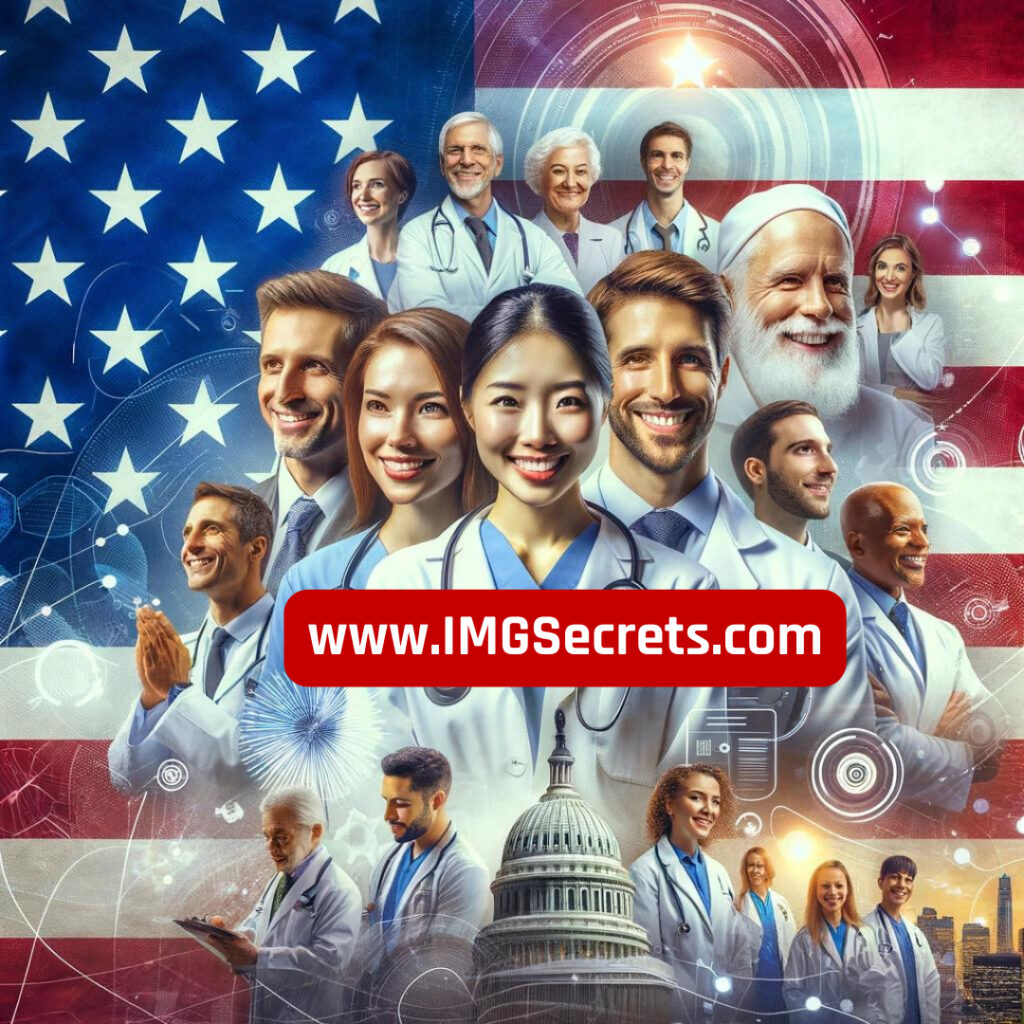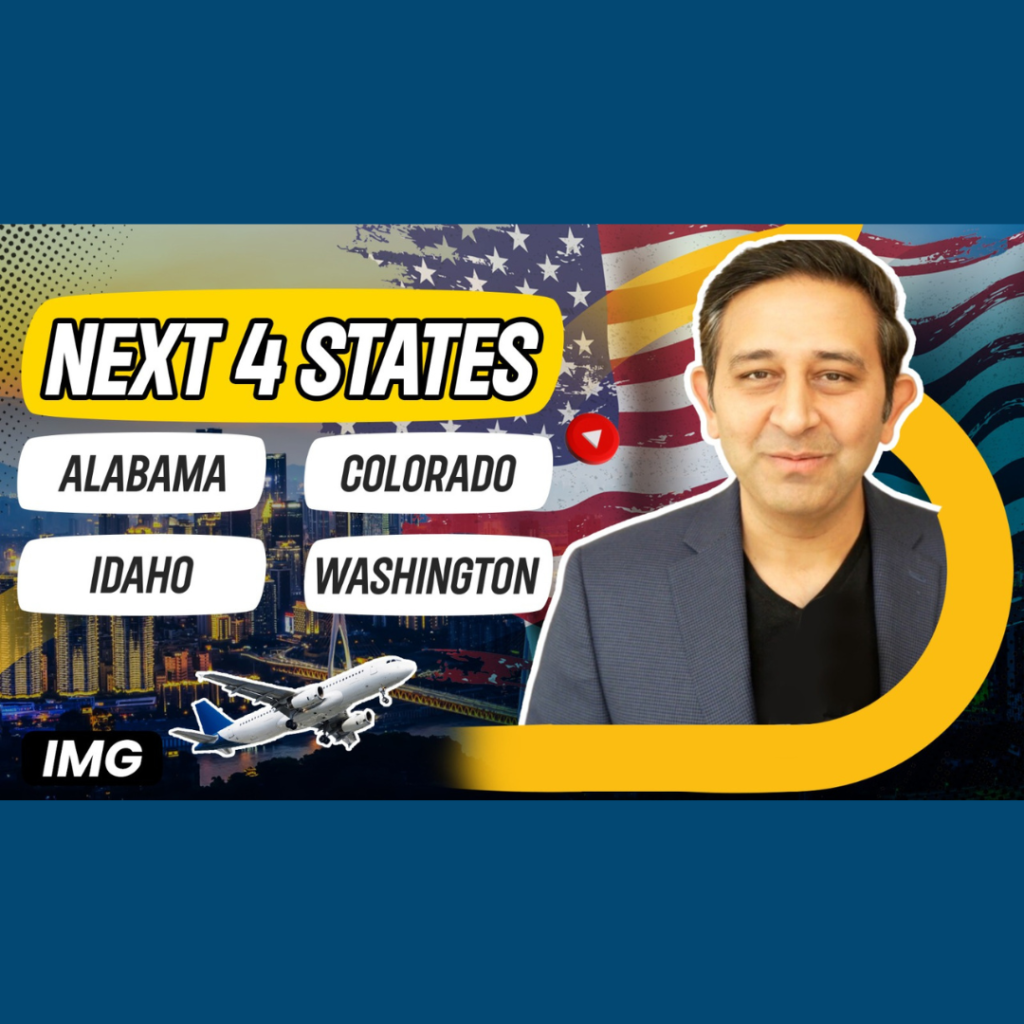Alternative Licensing Options for IMGs (International Medical Graduates)
Welcome to a groundbreaking development in the field of medical licensure: Alternative Licensing Options for IMGs. In a remarkable alliance, three major U.S. organizations have joined forces to establish new pathways for International Medical Graduates (IMGs), symbolized by the unifying image of the American flag. This collaborative effort heralds a new era, opening doors—quite literally—for IMGs seeking to practice medicine in the United States. As an IMG, this video unveils these pioneering alternatives tailored for you. Watch it in its entirety, and let’s navigate these promising opportunities together https://youtu.be/Cf6A4fp_bf4 Book an Appointment In an unprecedented collaboration, three pivotal organizations have stepped up to the plate: 1. The Federation of State Medical Boards (FSMB), 2. Intealth, and 3. The Accreditation Council for Graduate Medical Education (ACGME)—each name resonating with purpose through a distinct sound effect, emphasizing their significance. Together, they have convened a dynamic committee, a unity of purpose captured in a video of their meeting, dedicated to pioneering alternative entry paths and licensing options tailored for International Medical Graduates (IMGs). This coalition is a beacon of hope for IMGs, signaling a future of broader possibilities in the medical field of the United States The journey toward more inclusive medical licensing has seen significant progress over time. Historically, we’ve recognized that an alternate entry path program has been available for nearly all medical specialties, accessible in every state to those who meet the criteria. This concept took a concrete form when it transformed into legislation within the state of Tennessee—a momentous step, captured in, affirming the state’s commitment to innovative medical licensing. The movement didn’t stop there. What began as a singular state initiative gained momentum, sweeping across numerous other states in a wave of reform. And now, the progression continues even further. We’re witnessing the emergence of alternative licensing options—a development visualized through—each one a testament to the expanding horizon for medical professionals. Why are these esteemed organizations—FSMB, Intealth, and ACGME—pioneering such sweeping changes? It’s a well-established fact that International Medical Graduates (IMGs) represent about a quarter of all physicians in the United States—each one an invaluable asset trained beyond its borders. IMGs have stepped in to fill critical roles across the healthcare spectrum—from the rural clinics of the American heartland to the bustling corridors of major urban university hospitals. Their contributions have been vast, spearheading innovations in medical research, leading educational efforts, and delivering compassionate patient care. However, the spotlight of today’s discussion is not on these commendable achievements. Instead, we turn our attention to a pressing challenge: the current shortage of doctors in the USA—a situation so dire that, despite ongoing recruitment efforts, the scarcity persists. In certain specialties, the deficit is so acute that it has escalated to a crisis level. Amidst this backdrop, the popularity of the alternate path program for IMGs has soared, indicating its success and acceptance. Recognizing this, leading organizations such as FSMB, Intealth, and ACGME are now looking to expand upon this foundation, exploring further alternative licensing options for IMGs. These initiatives are not just progressive; they’re a necessary response to the critical doctor shortage in the United States. By harnessing the full potential of IMGs through these alternative pathways, we can make significant strides in addressing this national healthcare concern How about Board Certification? The landscape of medical certification is on the cusp of evolution. With alternative licensing pathways gaining traction, it’s not far-fetched to anticipate a similar revolution in the realm of board certifications. Imagine the scene: a doctor, certificate in hand, their face alight with the excitement of new opportunities and milestones achieved. For now, we remain observers, curious and expectant, as these developments unfold. Let’s stay tuned to this space, as the next chapter in medical board certification promises to be just as exhilarating. Book an Appointment How Can IMG Secrets Assist Hospitals and Universities? International Medical Graduates (IMGs) are a boon to hospitals and universities, enriching these institutions with their extensive training, global perspectives, and clinical acumen. They serve as catalysts for innovation, research, and superior patient care. At IMG Secrets, we specialize in connecting these valuable IMGs with healthcare and educational institutions eager to elevate their services. Our expertise lies in identifying and placing high-quality IMG talent that aligns with your organizational needs and aspirations. We invite hospitals and universities to partner with us in this endeavor to diversify and strengthen your medical teams. Together, we can forge a healthcare and academic landscape that’s not just competent, but also culturally rich and innovative. For a partnership that promises to enhance your institution’s capabilities and to discuss the potential benefits of hiring IMGs, please reach out to us at contactus@imgsecrets.com. How Can IMG Secrets Assist IMGs? We at IMG Secrets are committed to providing you with the most current and impactful information. Stay connected with us for real-time updates that could shape your medical career in the USA. Wondering if you’re the ideal candidate for these burgeoning opportunities? Are you ready to navigate the path to success in the American healthcare sector? Now is the time to act swiftly and strategically. By partnering with us, you can streamline your journey, conserving time, energy, and financial resources. Take the first step towards a fulfilling career in U.S. healthcare. Reach out to IMG Secrets, and let’s assess how you can maximize this window of opportunity. Book your appointment today at www.imgsecrets.com and unlock the door to your future. This article is an original publication of www.imgsecrets.com Should you encounter this material on any platform other than our website, please consider it unauthorised use. We urge you to report such instances to us directly at contactus@imgsecrets.com Dr. Rajeev Iyer MBBS, MD, FASA Associate Professor of Anesthesiology & Critical Care Medicine The University of Pennsylvania Philadelphia, USA The views and opinions expressed in this article are solely those of the author and do not reflect the official policy or position of the University of Pennsylvania or any other institution. I want to work with Dr. Rajeev Iyer https://youtu.be/vB2lrpInIGIhttps://youtu.be/qAUXPSdmd6M



